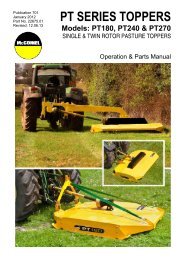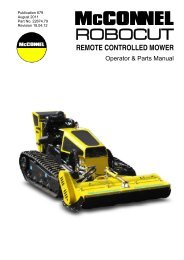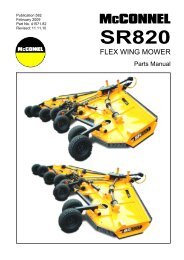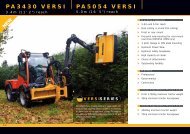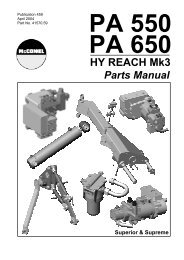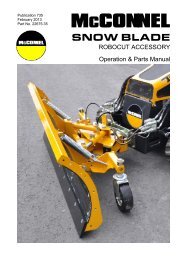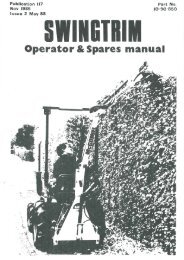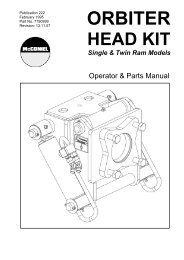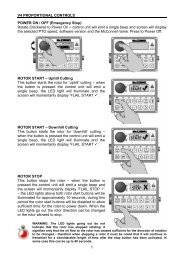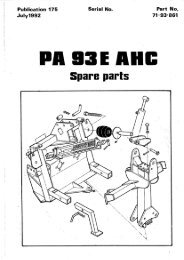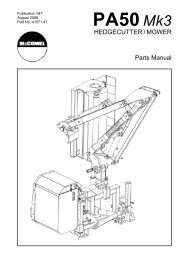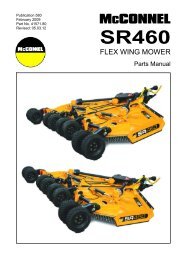FLAIL MOWERS PRE-OPERATION Inspection - McConnel
FLAIL MOWERS PRE-OPERATION Inspection - McConnel
FLAIL MOWERS PRE-OPERATION Inspection - McConnel
Create successful ePaper yourself
Turn your PDF publications into a flip-book with our unique Google optimized e-Paper software.
OFFSETTING<br />
The machine can be placed into an offset position to allow for work beyond the width of the<br />
tractor – depending on the particular specification of the machine offsetting operation will<br />
either be manual or hydraulic.<br />
Manual adjustment is performed by removal of the locking pin and ph ysically sliding the<br />
unit sideways before replacing the pin when the desired offset position is achieved.<br />
On machines fitted with hydraulic offset, adjustment to the required position can be carried<br />
out from the tractor cab by operation of the hydraulic sideshift ram.<br />
In both cases the machines must be rais ed clear of the ground to allow for free sid eways<br />
movement.<br />
DANGER: Ensure the machine is switched off and the rotor stationary when moving manual<br />
machines into the offset position – never attempt to perform this procedure with the machine<br />
running.<br />
<strong>FLAIL</strong>S<br />
Manual Offset Model – Locking pin Hydraulic Offset Models – Ram location<br />
As standard, the machine is equipped with Ha mmer type flails, but as an option can be<br />
fitted with Y-blade flails. The hammer type flails are more suited to harder working with the<br />
ability to cut materials up to 45mm (1¾”) diameter. Y-blade flails can cut up to 30mm (1¼”)<br />
diameter material – these figures are under normal use and may differ depending on the<br />
type and nature of the material being cut.<br />
The design of the mower is su ch that during work the roto r unit cuts the material and<br />
projects it upwards into the fr ame, as the material falls back into the rotor it is cut again<br />
several times until it is small enough to be discharged from the rear of the machine.<br />
Hammer Flails Y-Blade Flails<br />
The rotor unit should be inspect ed on a daily basis prior to work to check for damaged or<br />
missing flails – always replace damaged or missing flails immediately. Flail bolts should be<br />
checked for tightness on a regular basis and re-tightened as required before attempting to<br />
use the machine.<br />
WARNING: Checking of rotor components should only be carried out with tractors engine switched<br />
off, starting key removed and the PTO shaft disconnected. Always ‘prop up’ the machine using<br />
suitable supports before attempting to inspect or work on components underneath it.<br />
11





